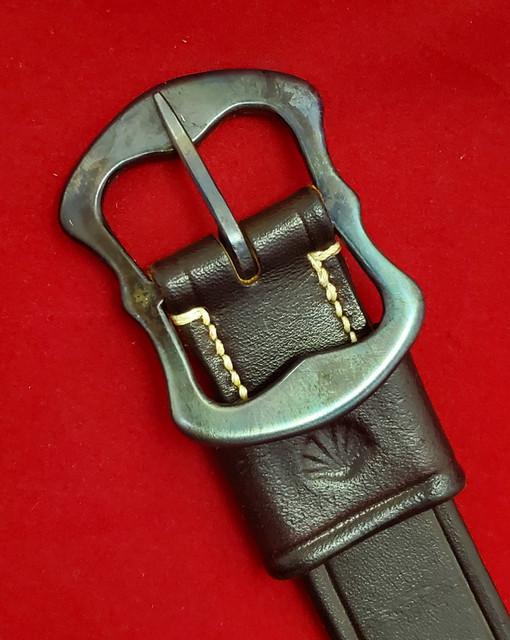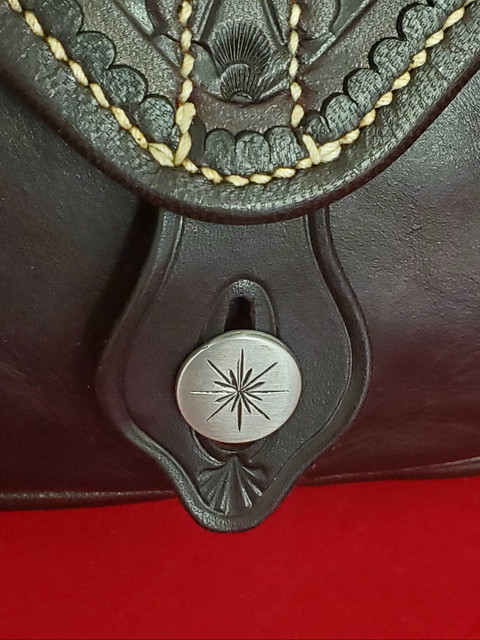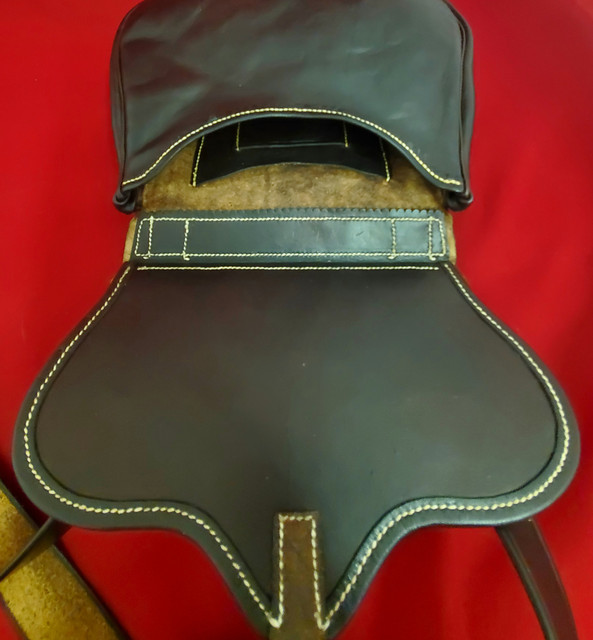PM,
I know you intended the emboldened comment above as praise, so please don't take my following comments in any way whatsoever as criticism towards you. It is just your comment inspired me to write the following.
Machine Stitching is at best a poor imitation of quality hand stitching, especially as done by folks like Capt. Jas. I am paraphrasing the Cordwainer at Colonial Williamsburg back in the 1980's, where many tourist visitors had the same comment on the stitching done in his shop and that was his reply.
Other than sometimes looking more uniform, there is nothing else about machine stitching leather that is better for stitching leather, other than machine stitching is cheaper to do. Machine stitching cannot account for the variations in the leather to put good tension on each stitch. Machine stitching will come apart in a line, when even one stitch is broken. Even if one out of every three stitches done by hand stitching are broken/cut, the hand stitching will last for years longer.
Back in the late 1970's when I was learning leather work on my own, most Law Enforcement Officers still wore leather gun belts. Any LEO who worked for a few years, eventually saw machine stitching on his gun belt in particular come loose because of wearing as little as one loop of machine stitching. After noticing this about the gun belt of a Police Officer friend, I offered to fix the stitching. He dropped the gun belt to me at the end of one shift and told me the work had to be done before he went on his next shift. What I thought might take less than an hour actually took over 2 1/2 hours, because I found so many other worn stitches on his belt and repaired them as well. He made a similar comment about the stitching looking almost like it was machine stitched and I informed him hand stitching would stand up much better and for years longer than machine stitching. Well, the word got out and even in that rather small Police Department, I wound up repairing quite a few other gun belts for the Officers. Grin.
I wanted to make this point because this is one aspect of the way they did things in the 18th century is STILL better done than something commonly done today.
Oh, one more example, though this was on a non period item. One day when I was the Division Ordnance Chief for 1st Marine Division, the Division Ammo Chief walked into my office during lunch hour and asked WTH I was doing? I had my 18th century reproduction awls and hand stitching supplies on my desk and was hand stitching a commercial hip belt to my Alice Pack and stitching loops onto the straps for a quick release breast strap. I informed the Division Ammo Chief I was correcting things they figured out in the 18th century and using 18th century methods to do it. He understood the value of the hip belt and breast strap, so he asked me where I had gotten them? Long story short, the REI outdoor store in San Diego got a lot of unexpected business on hip belts for packs and custom quick release straps that I attached for many of the folks at Division Ordnance and some others from other Division G-4 sections. Grin.
No offense taken and I completely agree machine stiched isn't close to the quality of hand stiched. What I meant by that is stitching is so uniform I had to look twice to see it was done by hand. My feeble attempts at it could never be mistaken for anything but bieng (poorly) hand stiched.
Interesting stories too. I'll keep it in mind while I'm doing my winter maintenance on my holsters and hiking equipment. Although I'll have to get some more practice with stitching before I attempt any major repairs.













